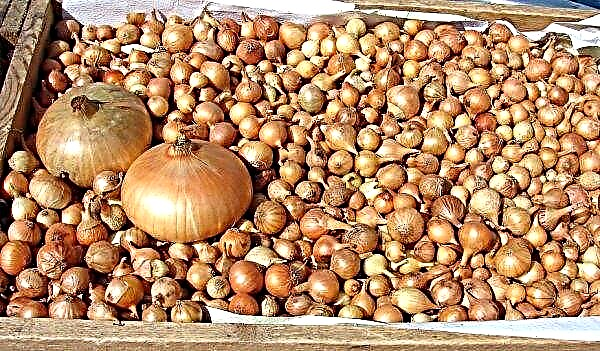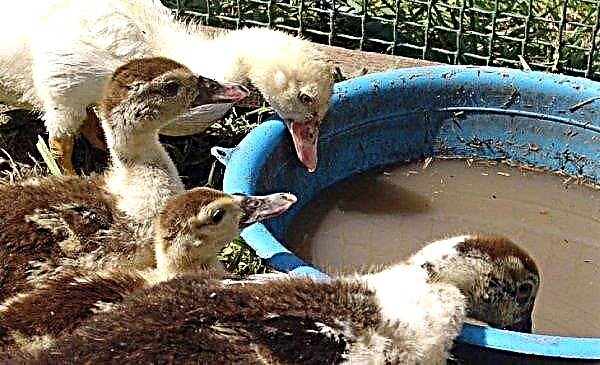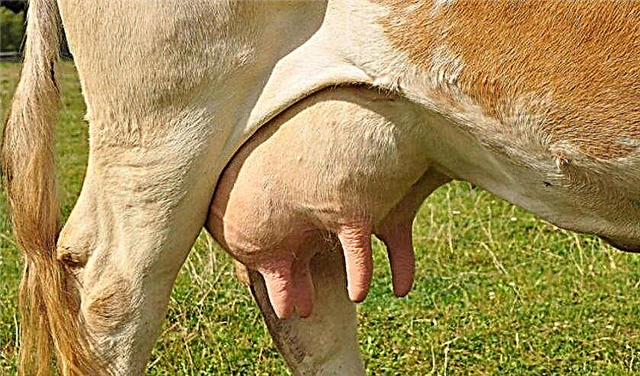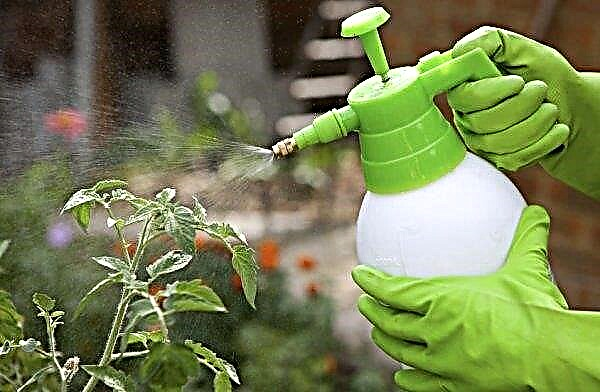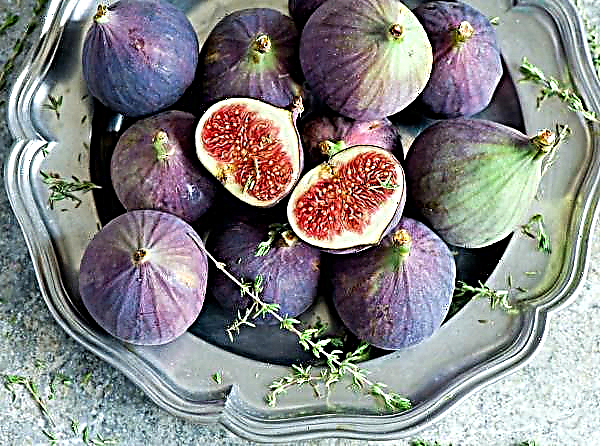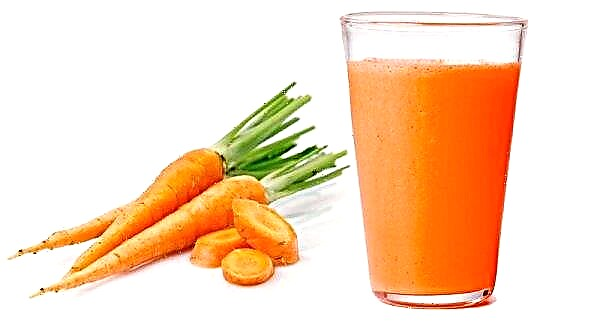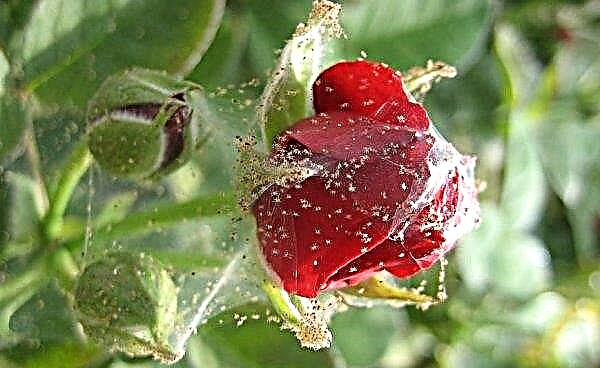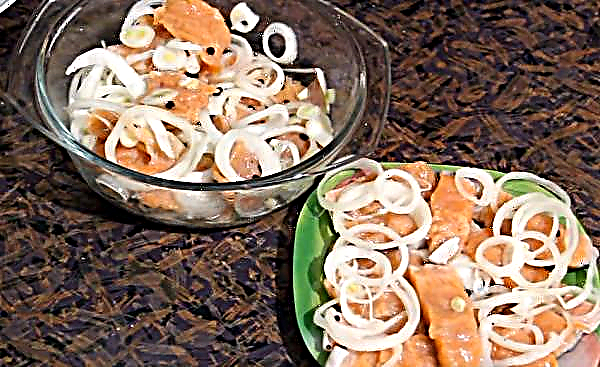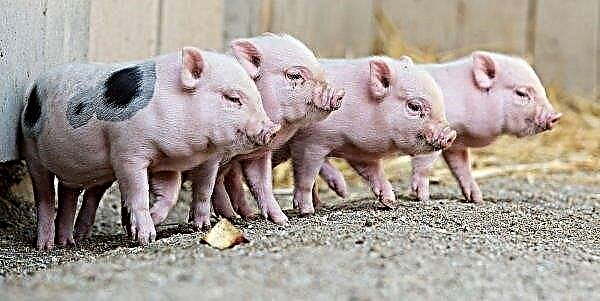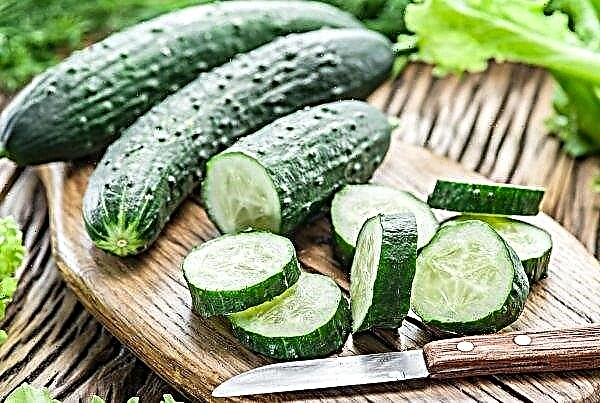Russian gardeners began to actively grow this flower in their garden areas, thanks to its unusual decorative appearance and an extensive number of shades. This culture is unpretentious to external factors, which only increases the demand for it. This article will cover the basic steps for hydrangea care in August to help you prepare your plant for winter.
Hydrangea Description
Garden hydrangea is an unusual plant that transforms a plot in spring. Depending on the variety, its inflorescences can be of different shades (white, red, raspberry and light blue). The average height of the bush is 3 m.

Inflorescences have a wide pyramidal shape. In diameter, they can reach 25 cm. Leaves are ovoid or elliptical in shape, with slight pubescence on the outside. Flowering begins in late May and continues until the end of July.
Did you know? Every year, the world celebrates Hydrangea Day. It falls on January 5th.
How to properly care for hydrangea in August
Care for hydrangea in August is necessary to prepare the plant for winter. If all the steps are performed correctly, then the culture will easily survive the change in temperature and in the spring will delight with beautiful inflorescences. Care for the flowers in August should be carefully. It is necessary to ensure high-quality watering, top dressing and trimming. Do not forget to also treat plants against diseases and pests in order to preserve the external beauty of the bush.
Watering and humidity
At the end of summer, plants should be watered abundantly. Irrigate the soil every week, using 30 liters of water per 1 m². This allows the root system to harden and develop in order to easily resist frost. It is also necessary to irrigate the crown of the bush to make it lush. Surface spraying is carried out every 3 days.
Important! Before watering, loosen the topsoil to normalize the level of humidity. Such actions will also help prevent rotting of the root system.
Feeding and mulching
In August, the last summer feeding is carried out. For this, potassium nitrate and superphosphate must be used. Mineral fertilizers will help not only to extend the flowering period, but also to normalize the development of rhizomes. Superphosphate will help make the crown lush. It is necessary to make 40 g of the substance for each bush. For the root system to function properly, use 50 g of potassium nitrate per plant.
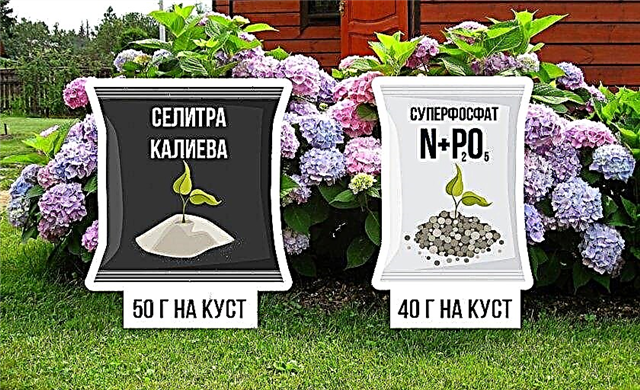
After the soil is moistened and saturated with nutrients, it is necessary to mulch the top layer of the earth. To do this, it is recommended to use spruce branches or fallen leaves. Thanks to such actions, the optimum moisture level will be preserved inside the soil, and you can also protect the root system from hypothermia.
Fertilizer
For reliable protection of the plant from diseases and frosts, it is recommended to use a complex of organic fertilizers. Agromax, which has a long-term effect, has proven itself best. Under each bush make at least 60 g of the drug. You can also use peat or compost, using 30 g of fertilizer per 1 plant.
Important! Before applying fertilizer, you must also loosen the topsoil and remove weeds. Thus, nutrients penetrate the soil better.
Pruning
In late July or early August, trimming should be minimal. It is recommended to remove only dry and damaged branches that take too much nutrients. In addition, you should remove the branches growing inside the bush to thin out the crown. Mass trimming of hydrangea is not recommended.

Care in the fall, wintering
In the fall, every gardener should make every effort to prepare the plant for winter. First of all, you need to cut the damaged branches again to enhance the immune system of the bush.
The preparation of panicled hydrangea for winter consists in hilling. Despite the high frost resistance (up to -30 ° С), sheltering of the root system will allow preserving the flowering of hydrangea in spring. Peat and rotted manure are considered the best materials for hilling. The height of the shelter should be 15 cm.
Diseases, pests and their control
Hydrangea can periodically be affected by various diseases and pests, which spoil not only the appearance of the bush, but also provoke the death of the plant. If untimely to fight them, then you can not save the flower, and the flowerbed will lose its attractiveness.
Treatment for diseases and pest control consists in spraying shrubs with insecticides and other chemicals. The main condition is compliance with the time interval so that bacteria and fungi do not have time to develop.
Chlorosis
The disease develops due to a lack of iron or an excess of lime in the soil. Chlorosis manifests itself in the form of yellowness and dry leaves, while the color of the veins is preserved.
 The disease can affect only part of the leaf plate or capture it in its entirety.
The disease can affect only part of the leaf plate or capture it in its entirety.
If the cause of the disease is an increase in lime in the soil, then the treatment is as follows:
- Add peat or aluminum sulfate (3 kg per 1 m²).
- Water the plants with rainwater.
- Reduce the amount of mineral fertilizer used.
If chlorosis has arisen due to a lack of iron, then it is necessary to irrigate with a solution of iron sulfate (2 g per 10 liters of water). In addition, water should be softened with citric acid. For 10 l use 4 g of powder.
Sunburn leaf
If sunny weather lasts long in the summer, then burns may appear on the bushes.. Symptoms of the disease appear as translucent spots on the surface of leaves or shoots. If you do not start treatment at the right time, then the affected areas become thinner and dry. To get rid of sunburn of leaves and prevent their appearance, hydrangea should be planted in partial shade.
 This disease is most often affected by a tree species.
This disease is most often affected by a tree species.
Gray mold
Symptoms of the disease (a gray coating on the leaves or soft tissues) are manifested due to excessive waterlogging of the soil. The reason may also be the density of the crown.
Treatment takes place in several stages:
- Remove the affected parts of the bush.
- Spray the plant with manganese solution (1 tsp. In 5 l of water).
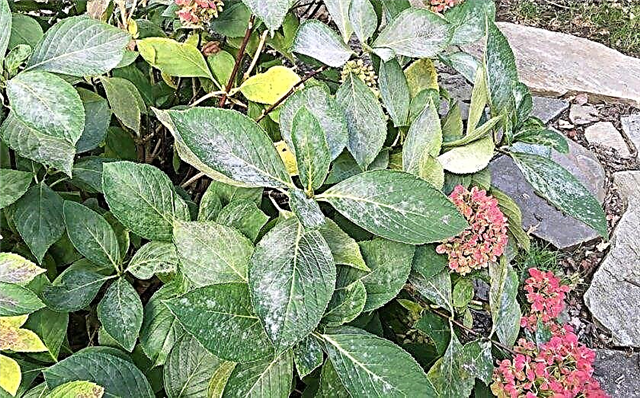
Alternatively, you can treat with a solution of Fundazole (40 g per 5 l of water). If the disease has affected most of the bush, it is necessary to eradicate it until the symptoms have spread to neighboring plants.
Leaf spotting
Leaf spotting appears as ring-shaped spots. After some time, the leaves become deformed and fall off. It is impossible to get rid of leaf spot by chemical or folk remedies.
 It is necessary to completely destroy the plant, so it is better to direct all efforts to the prevention of the disease. It consists in the treatment of bushes with a solution of Bordeaux liquid (10 g per 10 liters of water).
It is necessary to completely destroy the plant, so it is better to direct all efforts to the prevention of the disease. It consists in the treatment of bushes with a solution of Bordeaux liquid (10 g per 10 liters of water).
Powdery mildew
The main reasons why powdery mildew develops are an increased level of nitrogenous substances and a lack of watering. The symptomatology of the disease manifests itself in the form of yellow-green spots on the surface of the leaves.
Did you know? There is a legend according to which, the plant got its name in honor of the Roman princess - Hortense.
Over time, on the outside of the leaf plate, they become gray or purple. First, the affected areas of the shrub should be cut and burned. After that, the plant is sprayed with a solution of “Topaz” (50 g per 10 l of water).

Pests
Hydrangea is often affected by leaf aphids. To get rid of it, you need to spray with a solution of "Acarina" (20 g per 10 liters of water). Against a spider mite, it is recommended to use "Lightning" (10 g per 6 liters of water).
In the fight against the gall nematode, “Aktofit” (30 g per 6 l of water) is used. Destroy the garden slug will help "Molluscocide" (30 g per 10 liters of water).
 All spraying should be carried out at intervals of 2 weeks.
All spraying should be carried out at intervals of 2 weeks.
So, now you know how to properly care for hydrangea at the end of summer in order to prepare the plant for the upcoming winter. Thanks to such simple actions, the bush will be resistant to frost, disease and pests. This will allow in the spring to transform your garden plot, making it bright and unusual.


